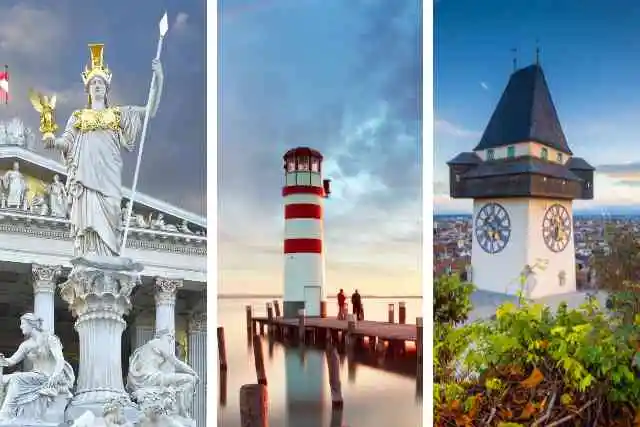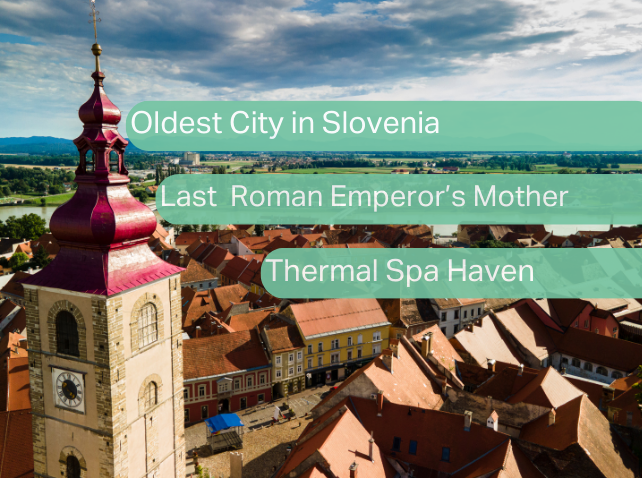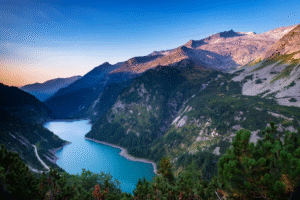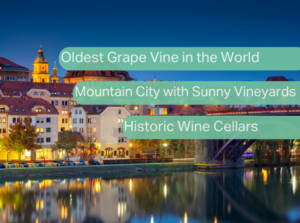Ptuj is a city full of history! It is not only the oldest city in Slovenia but also the oldest city in Styria (a region between Austria and Slovenia).
Today, Ptuj has about 25,000 residents. The city’s old buildings bring to mind medieval times, but you can also find Roman relics here. The history of Ptuj goes even further back. People lived here in the Stone Age. By 15 BC, the Celts had a strong settlement in this area. Later, the Romans took control and set up a military camp, where soldiers and craftsmen lived and worked.
In those times, Ptuj was at the border, so up to 100,000 soldiers could stay here temporarily. About 10,000 people lived in the town, but with the nearby camps, the number grew to 30,000 residents. This made Ptuj the largest city in the area of today’s Slovenia, even bigger than London (15,000) or Vienna (20,000).
Famous Thermal Spa
Ptuj is one of the top thermal spa destinations in Slovenia, thanks to its location on land rich in thermal springs. Terme Ptuj is among the most popular spa resorts in the region. It uses thermal water with a temperature of 39°C, coming from a depth of 1,065 meters. The water is rich in sodium bicarbonates and has healing properties.
This thermal water is especially beneficial for people with spinal issues, joint pain, and those recovering from surgery on the musculoskeletal system.
In 476 AD, the Roman Empire fell, and many tribes moved across Europe. The Slavs settled in Ptuj and have stayed here ever since. But the Franks and Germanic tribes also left their mark on the city. A building boom began, and many churches and monasteries appeared. In 1250, Ptuj got city rights and strong walls for protection. Jewish communities also lived here, but in the 15th century, the Habsburgs expelled them.
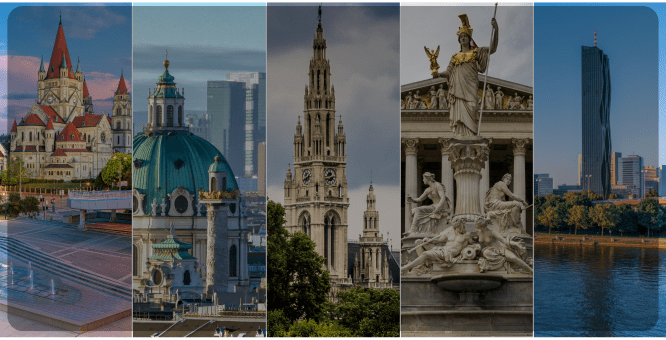
Subscribe
Explore Vienna like a local and discover nearby treasures.
Join our mailing list!
Ptuj was at the crossroads of many cultures and influences. In the 16th century, the Turks raided the area around Ptuj. The following centuries brought plagues and wars, but the town continued to grow. During the Industrial Revolution, Ptuj got electricity, and many modern buildings were built. In 1910, 86% of the city’s population spoke German, while Slavic-speaking people mostly lived in nearby villages.
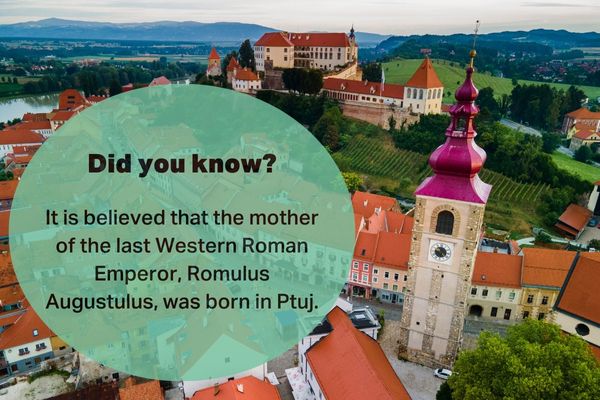
In the 20th century, the Nazis occupied Ptuj. Today, it is one of the most charming and popular tourist cities in Slovenia. You can easily reach it by public transport from Vienna.
Carnival in Ptuj
Kurentovanje is the largest carnival in Slovenia, held every year in Ptuj. The festival lasts 11 days and attracts tens of thousands of visitors. The main characters of the event are the Kurenti, figures dressed in sheepskin costumes, decorated with horns, and carrying a spiked stick called a “ježevka“. The Kurenti take part in rituals to chase away winter and welcome spring, visiting homes and villages around Ptuj.
The festival starts with the symbolic leap of the Kurenti. The highlight of Kurentovanje is the international carnival parade, where different groups from Slovenia and abroad join in the celebration. In 2017, UNESCO recognized the Kurent tradition as part of the Intangible Cultural Heritage of Humanity.
Must-See Attractions
in Slovenia’s Oldest City
Ptuj is Slovenia’s oldest city and offers a unique mix of history, culture, and architecture. Here are the top places to visit in Ptuj, perfect for history lovers and curious travelers alike.
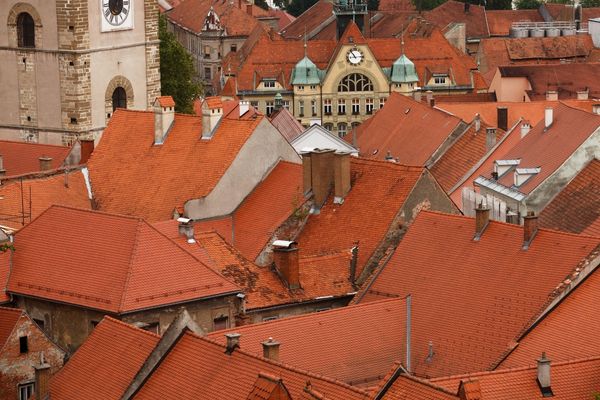
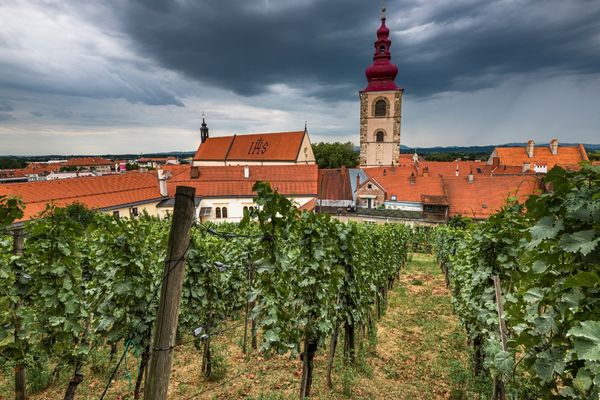
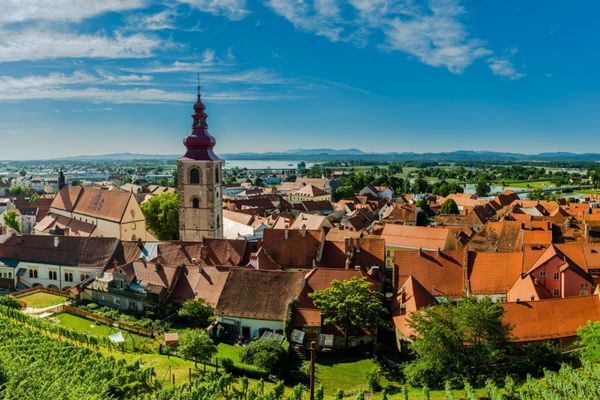
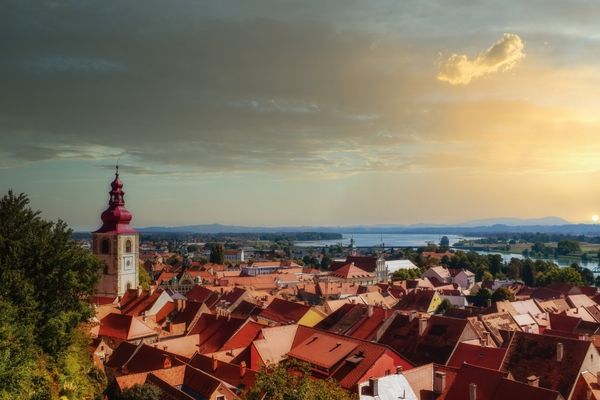
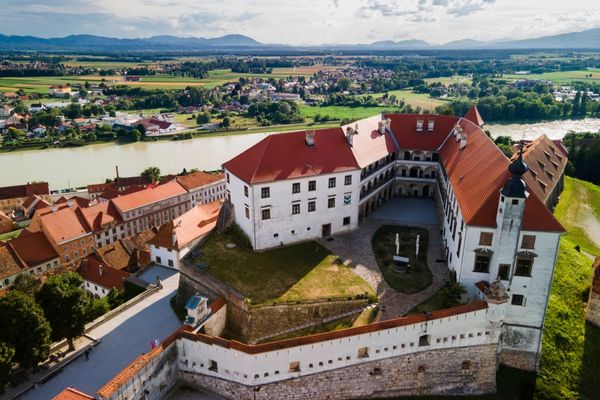
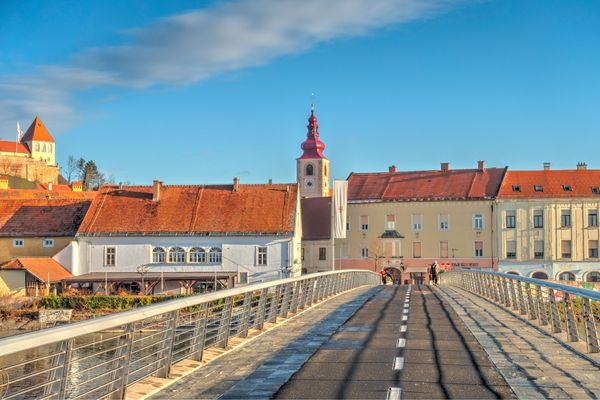
1. Mali Grad
(Minor Castle)
Mali Grad is a historic mansion from the 13th century, built as part of Ptuj’s city fortifications. The castle belonged to the Archdiocese of Salzburg and was first mentioned as “castrum minus” in 1231. Over the centuries, it changed owners, including the Schaunberg, Herberstein, and Wildenstein families. In the 16th century, it became the residence of local administrators. In the 19th century, it housed an office and later apartments. Today, it is home to the Ivan Potrč Library, which has over 350,000 books and serves the entire Ptuj region.
2. Minorite Monastery
of St. Peter and Paul
Located near the Drava Bridge on Minoritski Trg, this monastery dates back to the 13th century. It is one of the oldest in the region. The monastery was initially supported by the noble Ptuj family. It features a stunning Baroque facade added in the 17th century. During World War II, it was used as a Germanization office and later functioned as a library. Today, the monastery hosts cultural events, concerts, and exhibitions. Its rich library includes rare books, like a 9th-century parchment and a facsimile of the Gutenberg Bible.
3. Ptuj Synagogue
The former synagogue, now at Jadranska Ulica 9, was once the main place of worship for the Jewish community in Ptuj. After the expulsion of Jews, it became the Church of All Saints. Emperor Joseph II‘s reforms ended its religious use, and it later served as a storage site and apartments. Today, the Ptuj Museum preserves Jewish tombstones with Hebrew inscriptions, commemorating the Jewish heritage of the city.
Support
Each post on our site takes 10 to 20 hours to prepare, and we’re a small, independent project. We really need your support to keep things going! Your help means everything to us. Please consider supporting us, so we can keep bringing you awesome content.
Thanks for being awesome!
4. Ptuj Castle
(Ptujski Grad)
Ptuj Castle stands majestically above the city. It dates back to prehistoric times, when there was a fortified settlement during the Bronze Age. Built by the Archdiocese of Salzburg between 1125 and 1130, the castle became a significant stronghold. It even had its own mint in the 13th century. In the Baroque period, the Leslie family transformed the castle into a grand residence. Today, Ptuj Castle houses the Ptuj Regional Museum, showcasing collections of weapons, musical instruments, religious art, and famous carnival masks from the region.
5. Dominican Monastery in Ptuj
Founded in 1230, the Dominican Monastery is one of Ptuj’s oldest religious sites. Built on land donated by Mehtildis, it features a mix of Romanesque and Gothic styles. The monastery was a religious center for centuries, but after reforms, it became a barracks and later a museum. Visitors can admire the 14th-century frescoes, a Gothic cloister, and an impressive collection of Roman artifacts and medieval tombs.
6. Monastery of St. Peter
(Minorite Monastery)
The Minorite Monastery is located at the edge of the old town, on Minoritski Trg. It was established between 1255 and 1280. The monastery underwent several renovations, including a grand Baroque facade in the 17th century. Inside, you can find beautiful frescoes, a historic library with rare manuscripts, and a Gothic statue of the Ptuj Madonna. The complex hosts concerts, exhibitions, and cultural events throughout the year.
7. Orpheus Monument
The Orpheus Monument is one of the oldest Roman relics in Slovenia, located at Slovenski Trg. Dating back to the 2nd century AD, it served as a marble tombstone for Marcus Valerius Verus, a Roman official. The monument stands 5 meters tall and features carvings of Orpheus playing the lyre, mourning his lost love Eurydice. During the medieval period, the monument was used as a shame stone for punishing criminals.
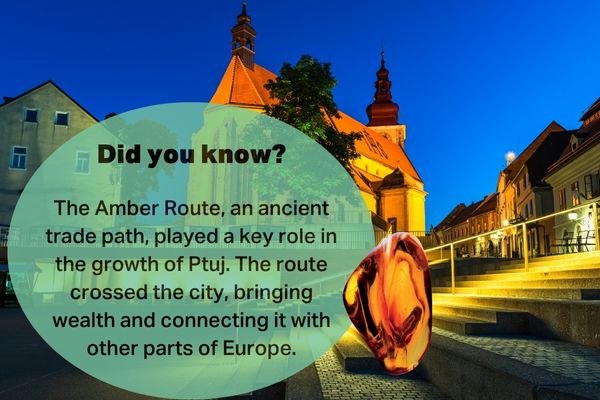
8. Church of St. George
The Church of St. George is a key landmark at Slovenski Trg. It dates back to the 12th century, but there may have been an early Christian basilica here as early as the 4th century. The Gothic church features XV-century stalls and ornate decorations. The church is famous for its Gothic statue of St. George, the city’s patron saint. Outside, you can see Renaissance and Baroque gravestones, remnants of the old cemetery.
Ptuj is a must-visit for anyone exploring Slovenia. From its rich Roman history and vibrant festivals to its relaxing thermal spas, this charming city offers unforgettable experiences. And if you’re planning to travel further, Ptuj is a great base for trips to Maribor and even Ljubljana. Want to know how to get there? Check out our blog for more travel tips and detailed guides.
Join Our Vibrant Community
Are you passionate about discovering the hidden gems of Vienna and its surroundings? Follow us on social media and become part of our enthusiastic community!
Why Follow Us?
- Exclusive Content: Each post is a labor of love, taking between 10-30 hours to create. We share breathtaking photos, captivating stories, and invaluable tips.
- Stay Updated: Never miss out on exciting events, new attractions, and must-visit spots in and around Vienna.
- Support Independent Projects: We are an independent project, and your follows help us cover the costs of running this page. Your support is crucial!
Your Support Matters!
Every follow, like, and share directly supports our work. It helps us continue bringing you the best content and ensures we can keep this site running. By following us, you’re not just staying informed – you’re helping us grow and thrive.
Don’t miss out! Click the links above and start following us today. We can’t wait to connect with you!

